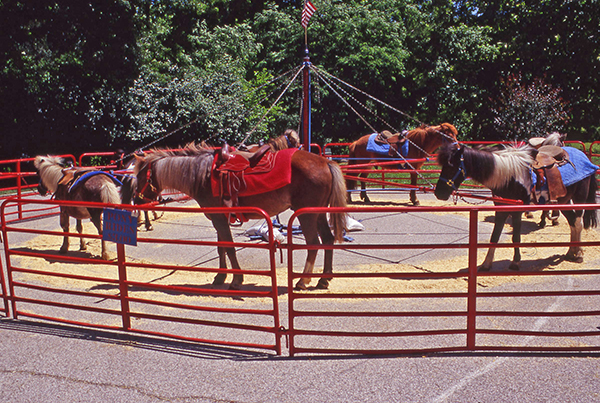
Animals shouldn’t be forced to entertain us.
Pledge not to patronize places that exploit animals.
From exotic animal shows to traveling zoos, the animal entertainment industry has a long and sordid history of abuse. Even seemingly innocuous children’s pony rides aren’t exempt from exploiting animals. With a motive for profit, animals are often kept in small enclosures, exposed to extreme temperatures and forced to “perform” in loud and stressful environments. At times, keepers use inhumane training and control practices, too.
Recently, there have been several local summer festivals that have included inhumane events such as the Banana Derby and exotic animal rides. Many who patronize these events are unaware of the mistreatment behind the scenes, often believing that these animals are enjoying the experience and help to educate children.
Please ask yourself: Is the attention on THE ANIMALS’ quality of life? And take the pledge not to patronize businesses for which the answer is no.
Thank you for looking out for animals‘ best interests!
As animal lovers, we know the draw of visiting places with animals — especially exotic ones that you may not be able to see everyday! But how do you know if the animal attraction you wish to visit is okay? It can be hard to tell, and unfortunately at present, there is no regulated certification to verify an animal attraction is ethical and humane. If you do not wish to forego animal attractions completely, here are tips (adapted from The Points Guy) to help you determine if one is worth your visit and support:
- Find out where the animals came from Animals should never be purchased and taken from the wild to live their lives in captivity.
- Determine if the attraction is more focused on animal welfare — or people-pleasing. Respectable animal attractions do not have animals “perform,” but rather allow people to observe the animals’ natural behaviors. If the attraction offers a hands-on/petting experience of non-domesticated species, it is likely not an organization that has the well-being of the animal top-of-mind.
- If the attraction is a zoo or aquarium, look to see if it accredited by the Association for Zoos and Aquariums (AZA) and/or the World Association of Zoos and Aquariums (WAZA). They have demonstrated higher levels of animal care and a commitment to conservation and education. (Accreditation alone is not necessarily enough, though; be sure to do your own research on the organization.)
- Follow the money. Is the animal attraction a nonprofit and/or an organization that contributes to conservation or animal rehabilitation? OR does it exist only as a money-making venture?
- Determine how the animals live. Do they have spacious areas resembling their natural habitat that include enrichment? Do they have freedom of movement and a place to hide/get away?
It’s important to be sure we’re informed about the places we visit and financially support. Use these tips to research, and if it doesn’t appear they have the animals’ well-being at heart, skip it! There are plenty of animal attractions doing good work in animal welfare and conservation to support instead!



